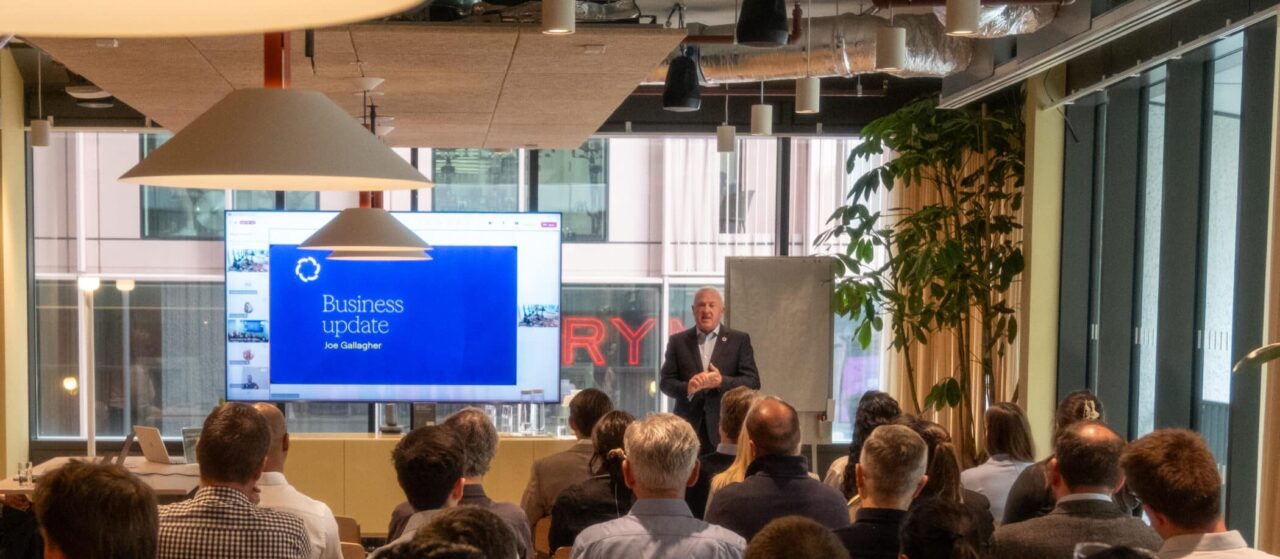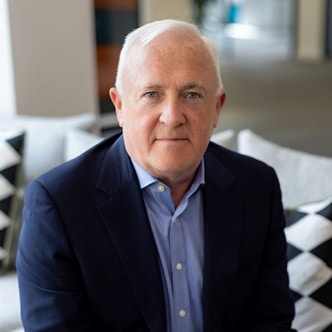2025 is promising to be yet another dynamic year across the Telecom, Media and Technology (TMT) industry.
Analysts are forecasting more growth than we’ve seen from the industry in the past 10 years – two to three percent top-line growth for leading European telcos in the sector, EBITDA growth of up to five percent and double-digit free cash flow growth in 2025.
A lot of this momentum is driven by significant changes in the European telecommunications sector paired with breaking ground in innovation: AI, cloud computing and other emerging technologies are accelerating growth within the industry, unlocking new business models, enhancing customer experience, and improving operational efficiencies.
With 2025 poised to be a pivotal year for the sector, we’ve highlighted some of the major topics to follow and the impact they’re expected to have in our industry.
Embedding AI across the industry
AI will continue to transform the sector, enhancing operational efficiency and customer experience. One of its primary impacts will be the automation of network management: AI-driven network management and automation are becoming essential for optimising network performance, driving energy efficiency, and predicting maintenance needs.
In customer service, we’ll continue to see AI-powered chatbots and virtual assistants provide faster, more personalised support, while AI algorithms will analyse customer behaviour and preferences, tailoring services and offerings to individual needs. These, too, are ways we’ve embedded AI into business within our operating companies. Along these lines, telcos are increasingly being seen as effective, scalable distribution channels for consumer AI products. Expect to see innovative partnerships between AI companies and telcos through bundling services and API integrations.
AI will also drive innovations in 5G networks – a priority area we’ve fostered in 2024 through groundbreaking pilots, investments, and collaborations with industry partners, including AWS, Nokia, CableLabs and the GSMA. Machine learning algorithms will continue to play a crucial role in managing complex 5G deployments, ensuring seamless connectivity to stop bottlenecks and facilitating the rollout of ultra-low latency services – a combination needed to bring AI to life in the real time digital economy.
Rise of new telco business models, from NaaS to satellite connectivity
We’ve seen Network-as-a-Service (NaaS) use cases take hold in 2024, introducing new, customisable connectivity services to consumers and enterprises alike. The NaaS framework unlocks various use cases spanning mobile/fixed “quality on demand” so users can adjust connectivity quality for specific use cases, KYC (Know Your Customer), identity verification, phone number confirmation, and device location and geofencing.
Count on the number of use cases to grow and commercialise in 2025, impacting various industries, including financial services, healthcare, media and entertainment, creating new value creation opportunities for telcos and enterprises.
There were advances in Low Earth Orbit (LEO) satellite technology in 2024, with growing partnerships between telcos and mobile handset companies to bring satellite connectivity directly to smartphones. We saw satellite launches, multi-year partnerships and service launches with Starlink and ASTS in collaboration with telcos. Handset giants, Apple and Google, also partnered with Globalstar and Skylo, respectively, to scale SMS capabilities to their latest models.
These developments set a strong foundation for innovation in 2025 – and beyond – where we may see commercialisation of space-based communication to cellular dead zones, providing complementary connectivity services to consumers and businesses.
NetCo and ServCo delayering to unlock value
We expect the delayering of telcos into two entities – the NetCo and ServCo – to continue to gain momentum in Europe in 2025. It’s a strategic shift aiming to unlock value, enhance operational and management efficiency, and attract new investments in the ever-evolving telecom landscape.
As a notable example, our own Telenet in Belgium partnered with Fluvius to launch Wyre in 2023, connecting households in Flanders and parts of Brussels and Wallonia to fibre. Last summer, Telecom Italia completed the sale of its NetCo to KKR, paving the way for Telecom Italia to adopt a new business model to compete more effectively in the consumer and enterprise markets in Italy.
And in February, we kicked off our plans with Virgin Media O2 and Telefónica to create a national fixed NetCo in the UK – establishing the biggest dedicated fixed network challenger in the country, offering clear wholesale choice at scale for other providers.
Looking ahead to 2025, we expect these activities to accelerate and gain further traction, as operators optimise their capital structures and improve management focus.
Unleashing the power of 6G
Although it feels like we just transitioned from 3G to 4G and then to 5G, companies are now rapidly advancing towards 6G. The 6G market is set for massive growth over the next decade, driven by the need for ultra-fast and high-capacity wireless connectivity.
That said, 2025 will still see 5G networks becoming more widespread in many parts of the world, with further advancements in speed, latency, and connectivity. Research from Ericsson has shown that global 5G subscriptions are forecast to reach 6.3 billion and makeup 67 percent of all mobile subscriptions in 2030.
And although much of the world is still expanding into 5G, early exploration into 6G networks will start taking shape, with a focus on even faster speeds, lower latency, and more immersive experiences. It will also introduce new features, such as AI-integrated network management and highly-efficient spectrum utilisation, creating the smooth UX that’s needed for future technologies like AR/VR, autonomous systems and the IoT.
Driving innovation with green data centres
Data centres were in the global spotlight in 2024, emerging as a key component of powering generative AI and the growing demands of the digital world. Last year, they were classified as critical national infrastructure in the UK, joining emergency services and healthcare, and energy and water supplies.
From their infrastructure to advances in their innovation, data centres be a focal point for the industry in 2025 for a number of reasons. Estimates suggest they make up about two percent of global electricity consumption now, but power-intensive technologies – namely AI – will increase data centre energy usage to more than double by 2030.
The telco sector will look at ways to power data centres to meet demand – and as sustainably as possible, utilising innovations like liquid cooling, renewable energy integration, and hyperscale designs.
This is a space where we’ll see tech and cloud providers collaborate with the electric power industry to invest and push for data centres fuelled by carbon-free energy sources.
This is another area AI will impact – in a report we’re publishing later this month, we discuss the nuanced role of AI as a gamechanger for sustainability within the telco sector – stay tuned.










